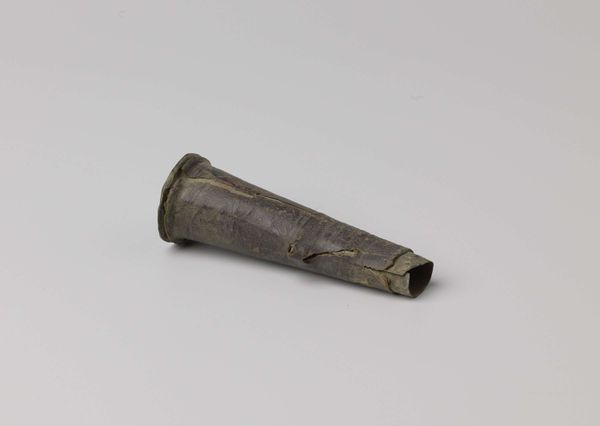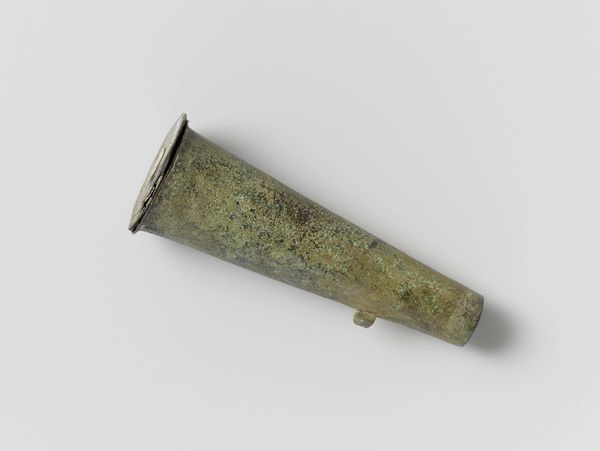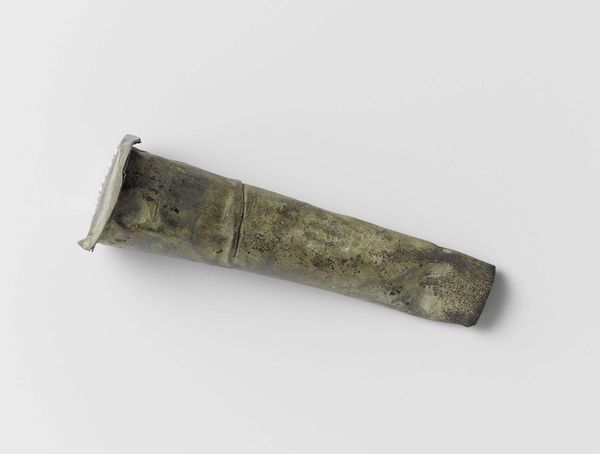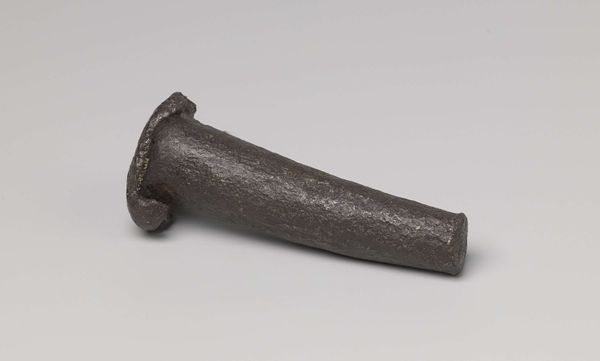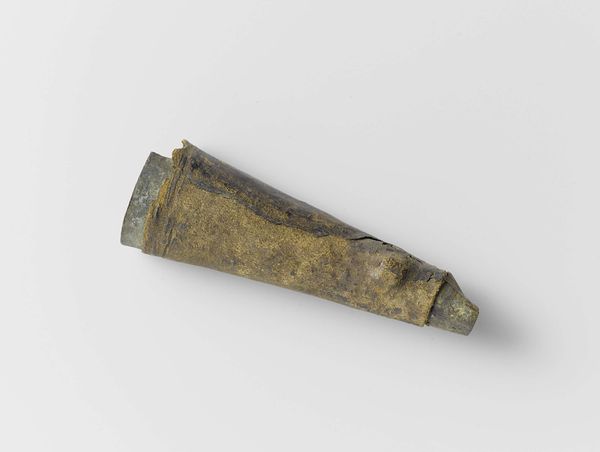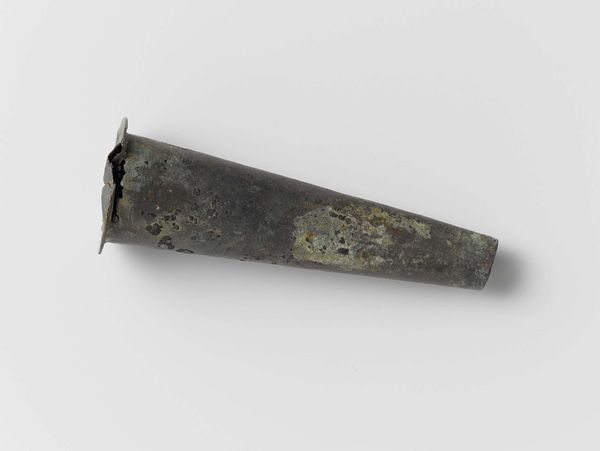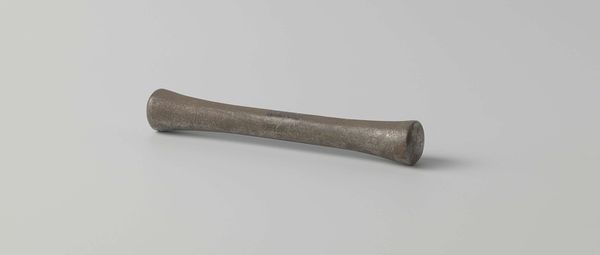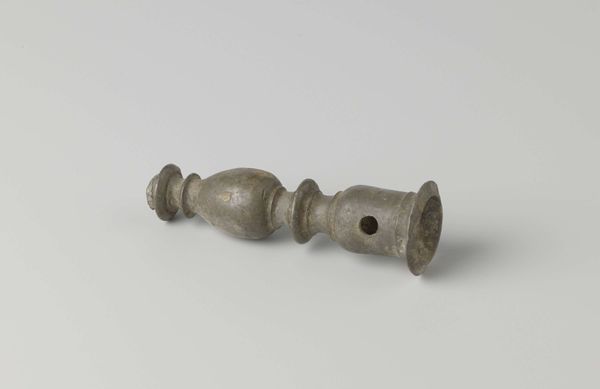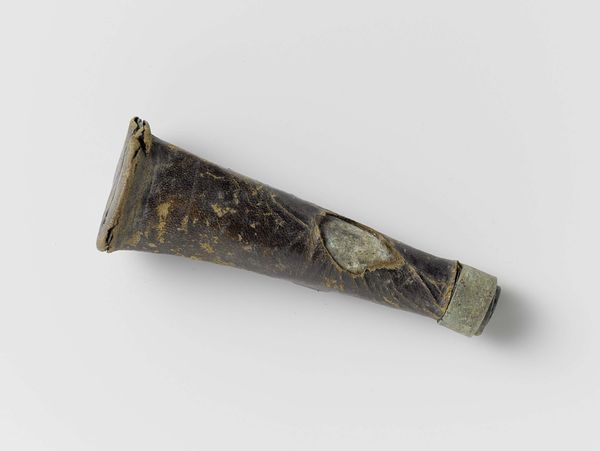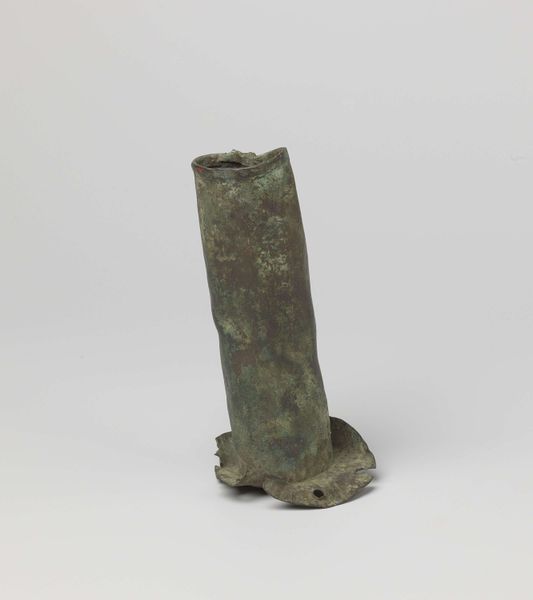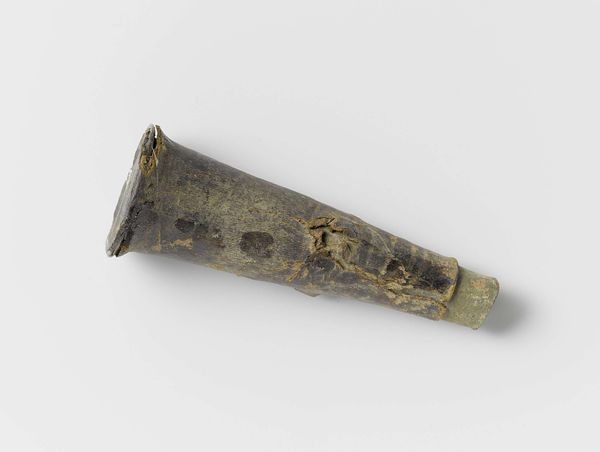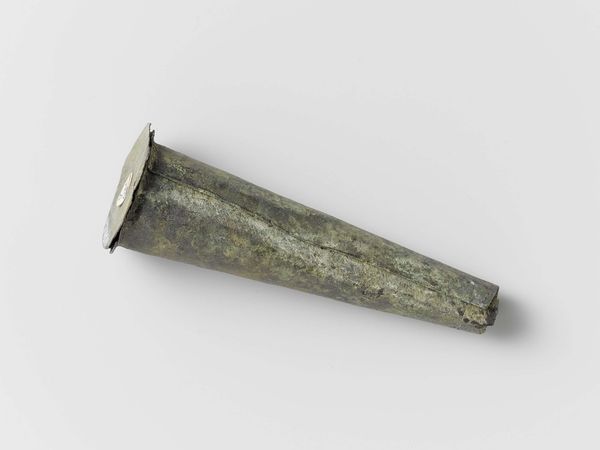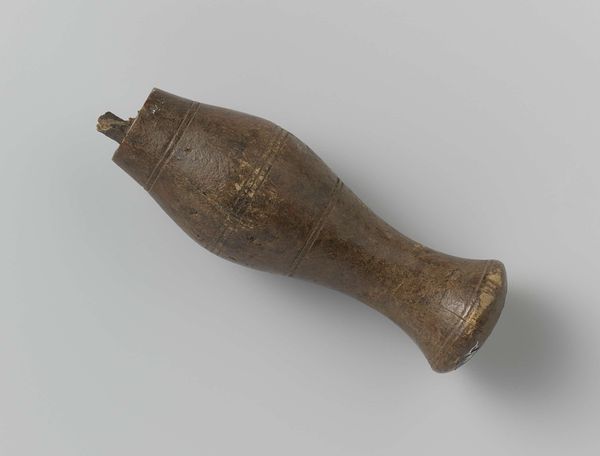
brass, metal, sculpture
#
brass
#
medieval
#
metal
#
sculpture
#
sculpture
Dimensions: width 11 cm, diameter 3.6 cm
Copyright: Rijks Museum: Open Domain
Editor: We’re looking at a fragment, a brass "Musketmaat", dated circa 1590 to 1596 from the Rijksmuseum, created by an anonymous artist. It has this kind of worn, aged look to it. It's quite small and seemingly simple, yet its very existence hints at broader narratives. What's your read on this piece? Curator: Well, seen through a historical lens, even seemingly insignificant objects like this musket mold unlock critical dialogues about the socio-political realities of its time. Its creation would have been driven by conflict, colonization, and evolving power structures, and demonstrates technological advancements used to impact those situations. We can analyze it by thinking about the economies created around weapon manufacturing, and how this production impacted warfare itself. It speaks volumes about institutional power and individual agency. Considering the object’s damaged state, it is evidence of change, but change driven by what? Editor: Change driven by the ongoing march of wars and skirmishes I assume? It is so simple in form, but I realize, also rather charged given what you highlight. Do you think displaying items like this in a museum normalizes such history? Curator: That's precisely what we need to critically consider when displaying objects linked to conflict or power. Does placing them in a museum setting somehow sanitize the history and minimize their actual, violent impacts? Museums play a vital role in the shaping and perpetuation of memory, of not only displaying events, but shaping a larger, overarching cultural memory around such artifacts. That makes selection, preservation, and display hugely important factors to consider when showing such a piece. What do you think museums could do differently? Editor: That’s such a complex question. More comprehensive labeling, or dedicated interactive educational spaces could offer crucial historical context beyond the physical artifact alone. Thinking critically about these objects, like this fragment, makes their very presence more justifiable in many ways. Thanks for this new perspective! Curator: Exactly! Engaging with an object, rather than just viewing it, helps us learn a lot.
Comments
No comments
Be the first to comment and join the conversation on the ultimate creative platform.

